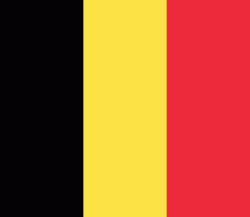Hasselt
On 01 July 2022 Hasselt had a total population of 80,260 (39,288 men and 40,972 women). Both the Demer river and the Albert Canal run through the municipality. Hasselt is located in between the Campine region, north of the Demer river, and the Hesbaye region, to the south. On a larger scale, it is also situated in the Meuse-Rhine Euroregion.
Hasselt was founded in approximately the 7th century on the Helbeek, a tributary of the Demer river. During the Middle Ages it became one of the free cities of the county of Loon (which had borders approximately the same as the current province of Limburg). It was first named in a document in 1165. In 1232 Arnold IV, Count of Loon gave the city the freedoms like those enjoyed in Liège. Even though the city of Borgloon was the original capital of Loon, Hasselt was to become the biggest city thanks to its favourable setting, and the proximity of the count's castle at Herkenrode in Kuringen. In 1366 the county of Loon came under the direct rule of the Prince-Bishopric of Liège and remained so until the annexation by France in 1794.
During the First French Empire, after the French revolution, the city of Maastricht became the capital of the French Department of the Lower Meuse. This comprised not only the area of the modern province of Limburg in Belgium, but also what is now the province of Limburg in the Netherlands. After the defeat of Napoleon in 1815, all of what is now Belgium became part of the United Kingdom of the Netherlands. During this time, it was King William I who confusingly re-named the Lower Meuse department after the medieval Duchy of Limburg. That Duchy was in fact named after Limbourg on the Vesdre river, now in the Liège province of Belgium, which had never encompassed Hasselt or Maastricht. Belgium split from the Netherlands in 1830, but the status of Limburg was only resolved nine years later in 1839, with the division of Limburg into Belgian and Dutch parts. Hasselt became the provisional capital of the Belgian province of Limburg. In ecclesiastical terms Belgian Limburg became an independent entity from the Diocese of Liège only in 1967, and Hasselt became the seat of the new Diocese of Hasselt.
Map - Hasselt
Map
Country - Belgium
 |
 |
| Flag of Belgium | |
Belgium is a sovereign state and a federal constitutional monarchy with a parliamentary system. Its institutional organization is complex and is structured on both regional and linguistic grounds. It is divided into three highly autonomous regions: the Flemish Region (Flanders) in the north, the Walloon Region (Wallonia) in the south, and the Brussels-Capital Region. Brussels is the smallest and most densely populated region, as well as the richest region in terms of GDP per capita. Belgium is also home to two main linguistic communities: the Flemish Community, which constitutes about 60 percent of the population, and the French Community, which constitutes about 40 percent of the population. A small German-speaking Community, numbering around one percent, exists in the East Cantons. The Brussels-Capital Region is officially bilingual in French and Dutch, although French is the dominant language.
Currency / Language
| ISO | Currency | Symbol | Significant figures |
|---|---|---|---|
| EUR | Euro | € | 2 |
| ISO | Language |
|---|---|
| NL | Dutch language |
| FR | French language |
| DE | German language |
















